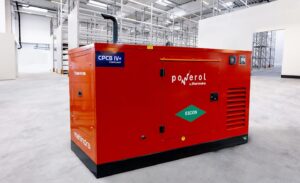
Robotic processes were developed to help people save time and effort when performing repetitive and time-consuming tasks. Intelligent software robots can execute repetitive tasks that would otherwise require intelligent humans. This reduces mistakes and saves money. It also allows for human engagement to be redirected to the most important tasks. The robotic process automation market is being propelled forward by the use of machine learning and intelligent automation.
Products and services for robotic process automation (RPA) can be used to automate time-consuming and repetitive tasks. Robotic process automation can aid firms in improved resource management and profit maximization. Below are the top RPA trends and projections for 2022.
Multiple Platforms, such as RPA, BPA, iPaaS, LCAP, & AI, Are In Competition:
Those who have been active in this topic, especially in the USA are well aware of the competition between several platforms for the soul of automation technology. We players from every area, from low-code application platforms (LCAP), business process automation to iPaaS, robotic process automation platforms, and artificial intelligence platforms, have been vying for a spot on the top, or rather, to be at the center of all automation technology.
The year 2022 will be marked by multiple heads driving automation projects. They will be working toward the creation of a single technology platform for automation. There is already a widespread belief in the USA that RPA technology will be the clear winner. The use of robotic process automation technology in the USA is already exploding.
Then there are sophisticated RPA systems, which are used to integrate mission-critical functions across an organization, such as governance, low or no-code development environments, and scalability support.
Flexibility in Delivery Leads to Cloud-Based Architecture Innovation:
Organizations are using the native cloud for both SaaS and non-SaaS platforms, and we’re seeing a lot of compartmentalization in the storage sector.
Though delivery isn’t often a top concern in the automation world rather than trying and testing and making it work no matter what, it can be an important consideration when choosing a robotic process automation platform. Some of the players in the USA now offer a wide range of options, shorter lock-in periods, flexibility, and a higher success rate for which the competition is fierce. This has sparked a lot of interest in the market of the USA, and we’re seeing a lot of companies develop platforms that combine SaaS and on-premise alternatives with minimal downtime.
The Demand For Speed Is Still Present:
Much has been stated about how the epidemic has sped digital change, which once took years but now takes months or weeks. To stay up with the pace of change, business executives must choose the correct intelligent automation, machine learning solutions that have been pre-trained to give a faster return on investment. Working with a partner that can share success stories about automating a certain industry or company function is another method to accelerate the process.
To keep up with competitors, they must act rapidly no matter what to stay in the game and the clock is already ticking. To guarantee that their organization automates wisely and in the proper ways for their business, enterprise executives can begin by analyzing their automation maturity.
Introduction of Smart Process Automation:
Smart Process Automation (SPA), a more advanced version of robotic process automation, is gaining a lot of traction these days. In the near future, it is expected to boost the robotic process automation market to new heights. In addition to performing repetitive tasks, Intelligent Automation allows businesses to add an extra layer of intelligence to their systems. This enhanced capacity assists organizations in executing complex tasks that require decision-making skills. It is a next-generation robotic technology that, with the use of Artificial Intelligence and Machine Learning, can deliver significant data insights as well as bring about radical digital change.
2022 will be a year of continued and sustained growth for the whole business ecosystem with robotic process automation. Follow these 4 Automation Trends with varied functions that have stepped up their efforts in their sectors, resulting in a considerable increase in automation in their domain. As a result, the trajectory is currently trending much higher than expected.
To stay at the forefront of this massive competition in robotic process automation, connect with the experts now and take your business to a whole new pinnacle in no time.




